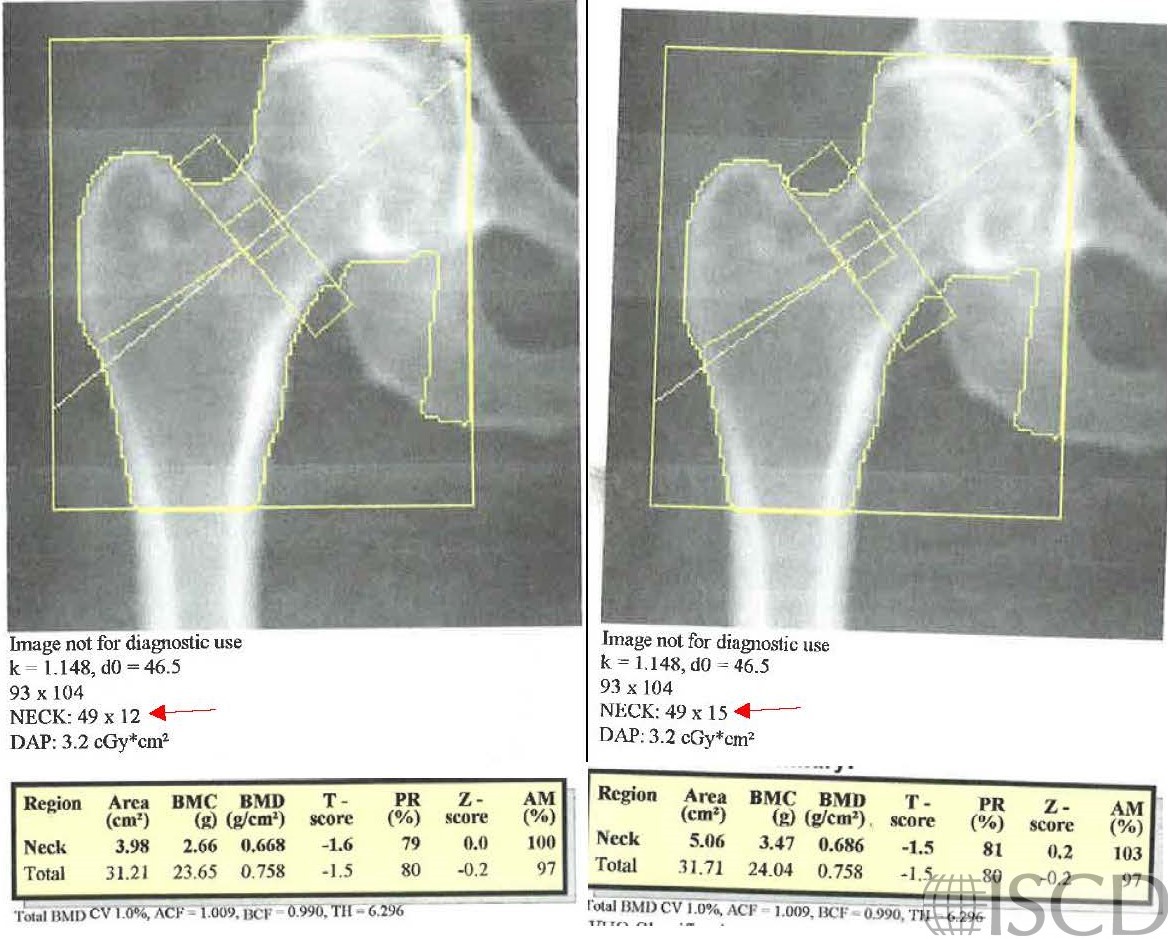Incorrect Femoral Neck Box Size
The default size of the femoral neck box on a Hologic scan is 49 x 15 pixels. The arrows point to the place in the Hologic printout which documents the size of the femoral neck box.

The left panel shows a Hologic hip scan with an incorrect femoral neck box size. The default is 49 x 15 pixels. The right panel shows the correct scan. For accuracy and precision, it is important to evaluate the femoral neck box positioning and size.
Sarah L Morgan, MD, RD, CCD, The University of Alabama at Birmingham